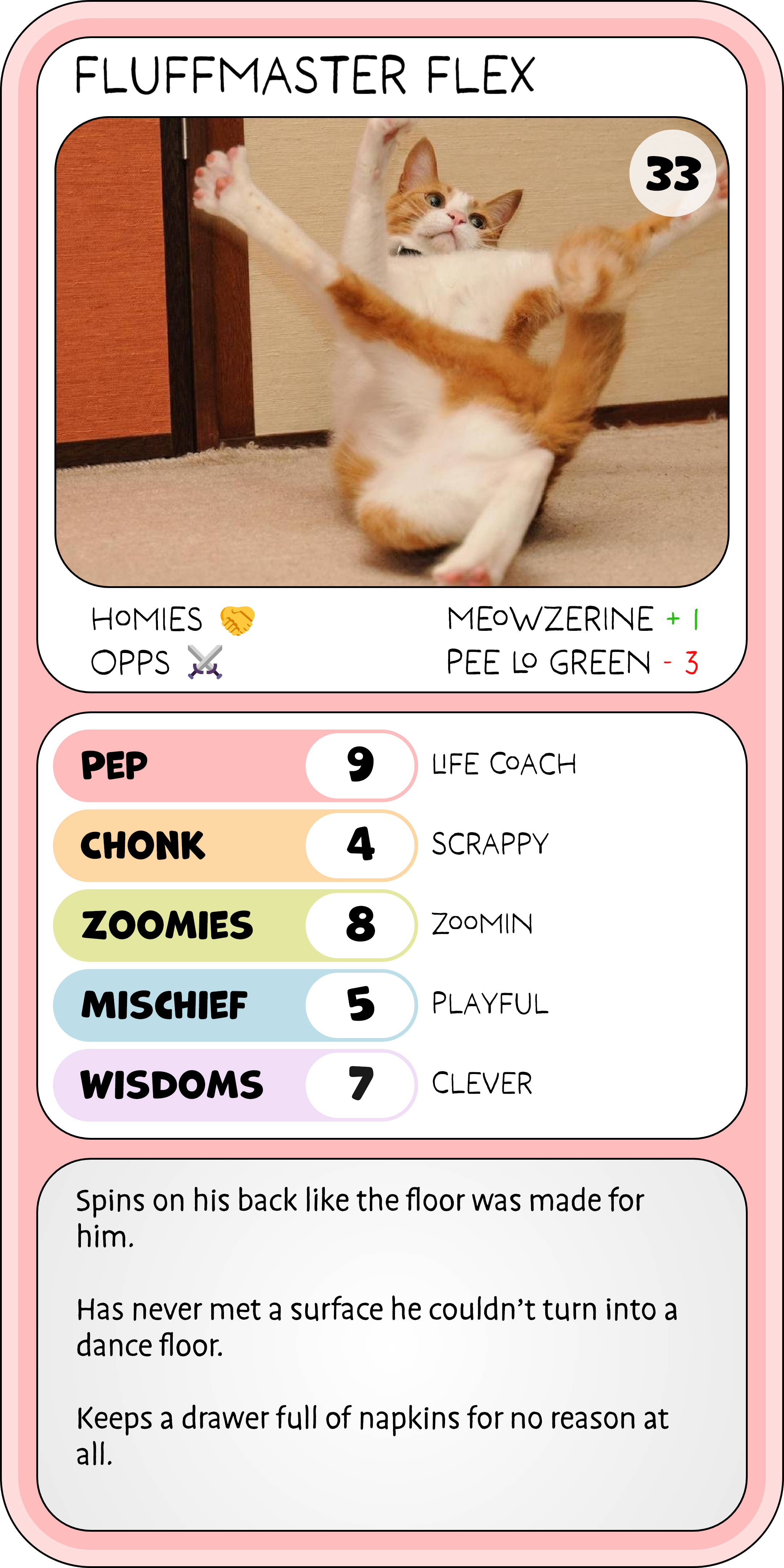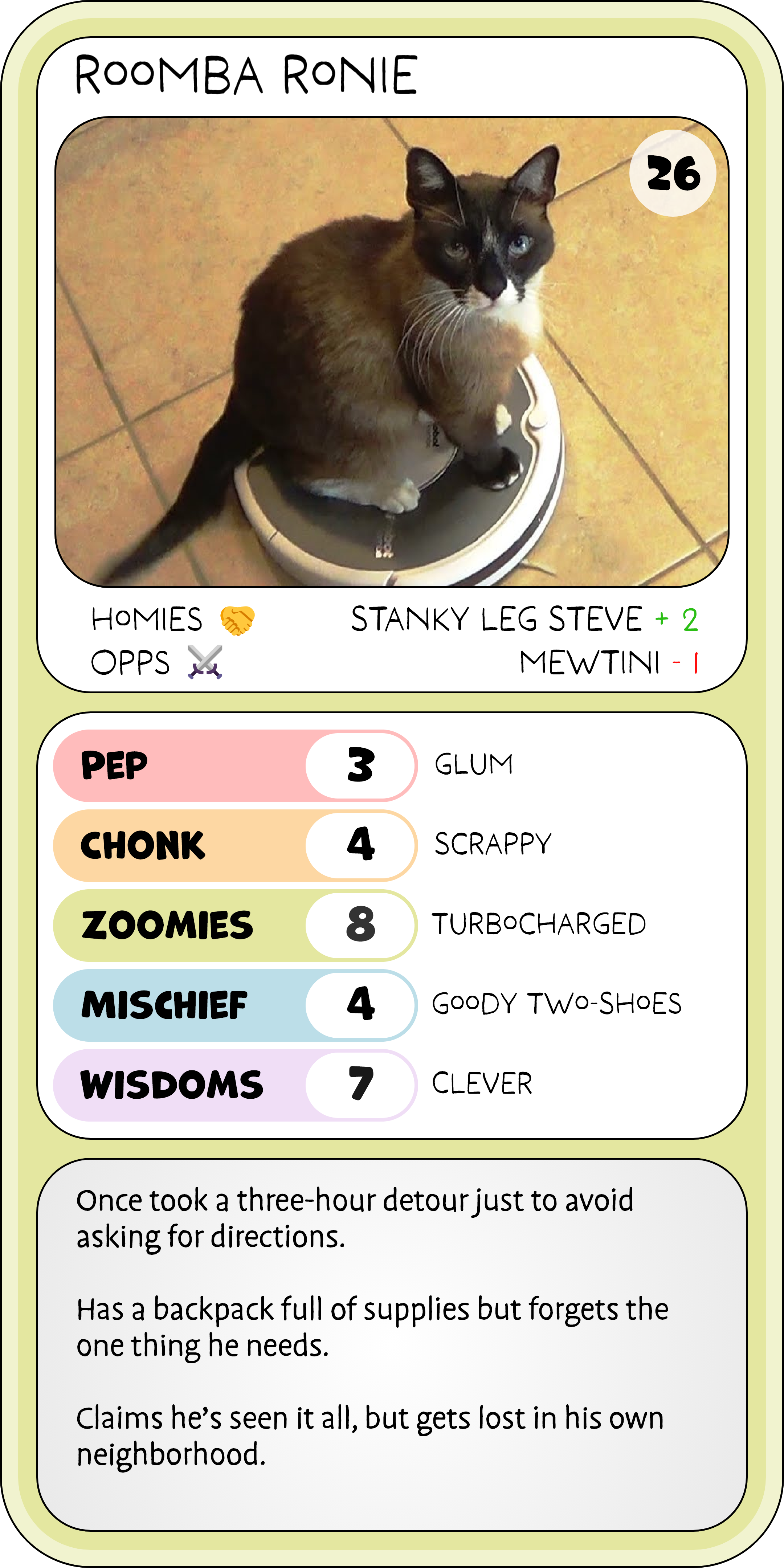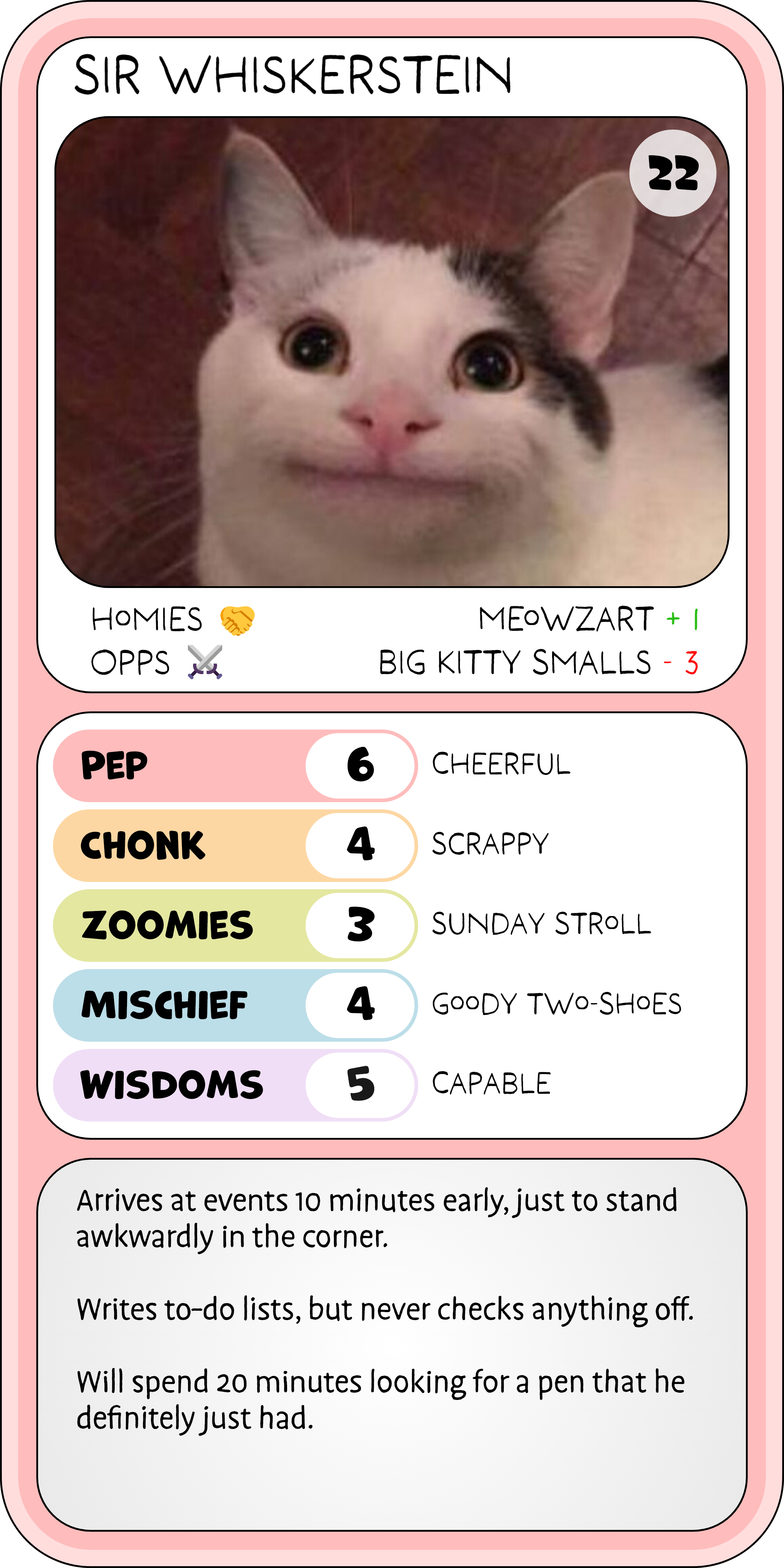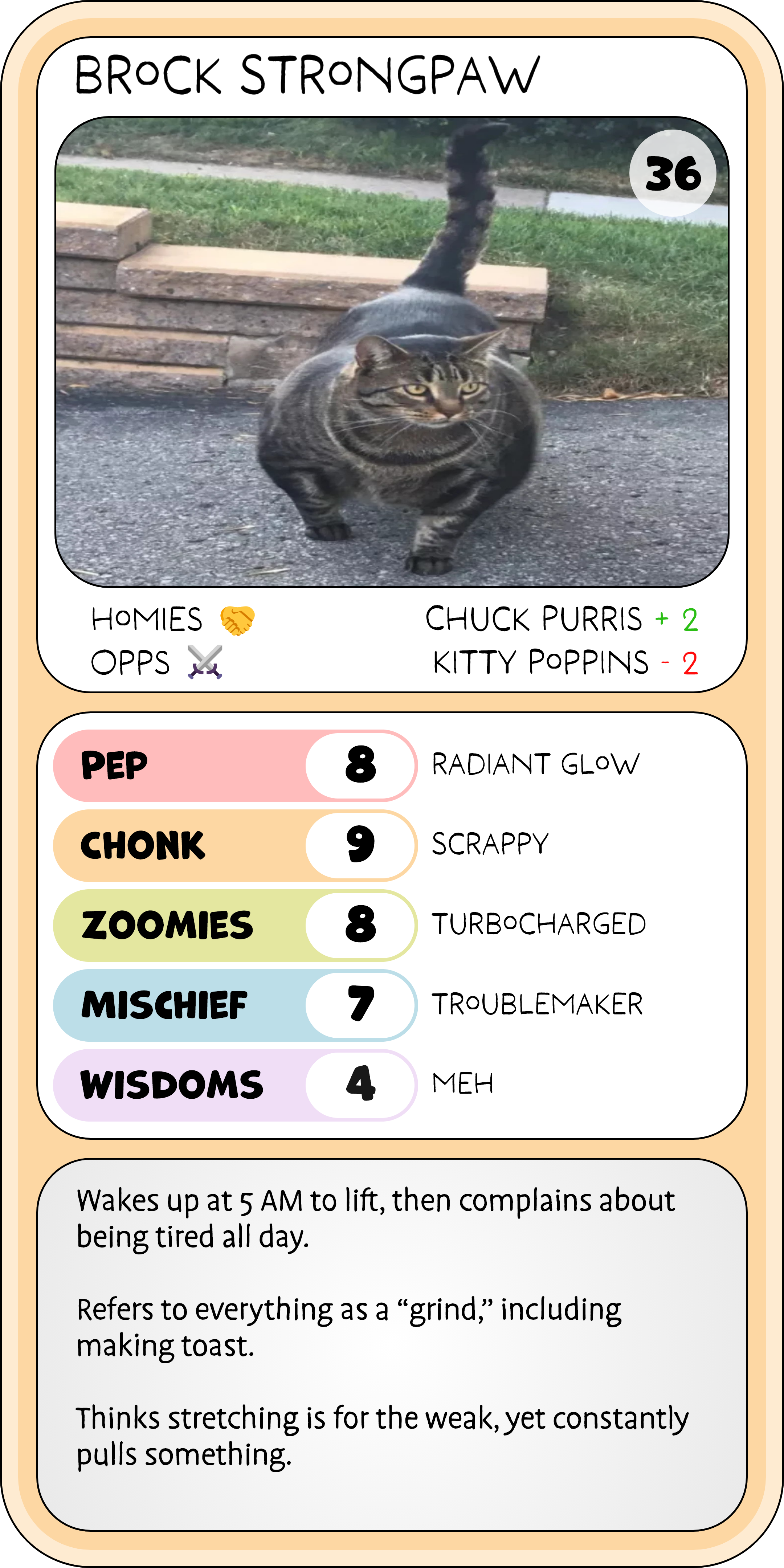Battle Kittens: A Strategic Card Game
"Battle Kittens" is a strategic and fun-filled card game that combines quirky, battle-ready cats with engaging gameplay mechanics. Each kitten has its own unique stats: Pep, Chonk, Zoomies, Mischief, and Wisdoms, which determine their power during each round of play. The goal is to outsmart and outplay your opponent by strategically using your kitten cards to win stat comparisons, accumulate set-aside cards, and ultimately collect all the cards in the deck.
To design the gameplay balance, I used AI tools to help create the optimal balance of stats for each kitten. This allowed me to ensure that no card was overpowered and that the game remained challenging and fun for all players.
For the UI design, I focused on creating simple and readable card layouts that clearly show each kitten's stats. Each stat is color-coded with soft, colorful shades, making it easy for players to quickly identify key information. The descriptions on the cards highlight each kitten's fun personality, making the experience not just about strategy but also about enjoying the character and humor of each unique kitten.
Battle Kittens: Game Rules
Objective:
In Battle Kittens, two players face off using a deck of cards, each representing a unique kitten with specific stats. The goal is to collect all the cards by winning rounds through stat comparisons, accumulating set-aside cards, breaking ties through strategic gameplay, and engaging in high-stakes dice duels.
Game Setup:
The deck is shuffled and split into two equal piles, each with 26 cards.
Each player draws the top card from their deck without knowing what it is. The cards have a Rock, Paper, Scissors symbol on the back, which determines who gets to pick the stat for the round.
Gameplay Flow:
Stat Comparison:
After choosing the stat, each player compares their card’s value in that stat.
The card with the higher stat wins the round.
If both cards have the same stat, it’s a stalemate (see Ties and Set-Asides).
Dice Combat Duel:
If the player who chose the stat has a higher stat value than their opponent’s card, but the opponent’s card has a higher total sum across all stats, the round enters Dice Combat.
Both players roll a six-sided die (D6) and add the roll to their chosen stat.
The new totals are compared. The player with the higher value after the dice roll wins the round.
If the result is another tie, the cards are set aside, and the tie-breaking process continues in the next round.
Ties and Set-Asides:
In the event of a stalemate, the cards are set aside but still belong to the player who played them.
In the next round, players continue the stat game, selecting a stat to compare. The set-aside cards' stats are added to the stat of the cards that are currently in play.
If the tie is broken, the winner takes all the cards (both in play and set aside) for that round.
If the tie is not broken, players will continue to accumulate the stats from the set-aside cards and continue until a winner is determined. The number of cards in play can increase (2, 4, 6, 8 cards, etc.).
Break the Tie:
The tie can continue over multiple rounds, with the accumulated stats being added to the cards. Players can choose to compare a new stat each round or continue using the same stat.
Once the tie is broken, all the accumulated cards from the tied rounds are awarded to the winner.
Winning the Game:
The game continues until one player wins all the cards or the specified number of rounds is completed.





















































